London Travel Guide
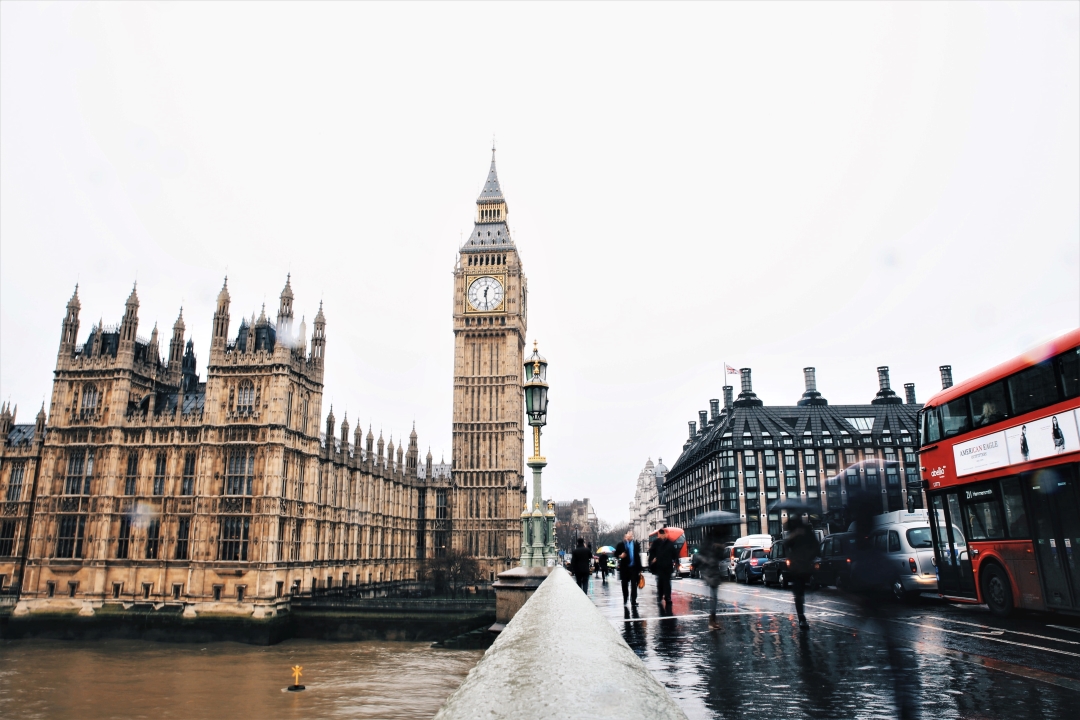
The closest city to my hometown, London has a special place in my heart. The UK‘s capital city has blossomed into a melting pot of culture, art and cuisine. Whether you’re chowing down on snacks at Borough Market, watching a Shakespeare play on the Thames or into indie gigs in Shoreditch, London has something for everyone. This London travel guide takes you through the best of the city.
First Time in London? Before we get started with my London travel guide, you’ll need a place to stay. I always recommend tourists find a location that’s central on a first visit to London. Staying in one of the hotels near the Shard is a good option as it will situate you perfectly for sightseeing in the city.
Top Neighbourhoods to Visit In London
The City of London — London’s square mile is where you’ll see some of the city’s most famous skyscrapers including The Gherkin and the walkie talkie. Other sights in this area include St Paul’s Cathedral, the Museum of London, the Tower of London and the Sky Garden.
London Bridge — A stone’s throw across the river from City is the London Bridge neighbourhood. It’s stacked with offices and London’s most famous skyscraper, the Shard. But this district packs a creative edge. Bankside, Bermondsey Street and Borough are all worth exploring.
South Bank — A stroll along the historic South Bank of the River Thames takes you by many of the city’s most famous theatres and pubs, including the National Theatre, Shakespeare’s Globe and the Old Vic.
Westminster — Westminster is the central tourist hub of London. Here you’ll find the Houses of Parliament, Buckingham Palace and Westminster Abbey — and the London Guards with their bearskins on.
Covent Garden & Soho — The adjacent districts of Covent Garden and Soho are a magnet for the younger, trendier portion of London’s population. Convent Garden makes for a perfect cocktail stop en-route to Soho which pulls in a crowd for its nightlife scene.
Camden — Our friend reckons there’s more eccentric individuals in Camden than the rest of the capital put together, and he’s probably not wrong. Camden is known as being London’s alternative neighbourhood.
Shoreditch — Rammed with more hipsters than you can shake a stick at, Shoreditch is an arty neighbourhood home to the London Coffee Festival and many of the capital’s most trendy restaurants.
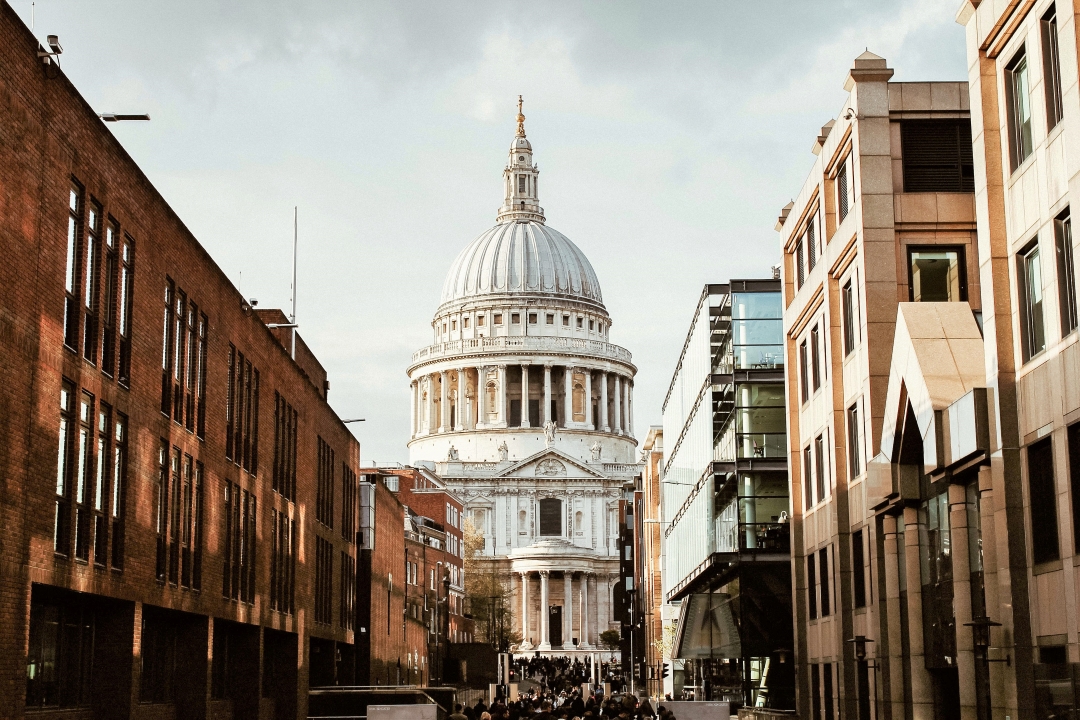
Best Things To Do In London
This list of the best things to do in London consists of all my personal favourites. As a London local growing up and as I’m based in Brighton, just a short train ride from central London, I know the city well. This London travel guide features something for everyone.
Walk the South Bank
A riverside walk along the Thames is the best way to soak up London’s top tourist sights. Start at London Bridge and head West until you finish the walk at the London Eye and Big Ben. This walking route will take you past Shakespeare’s Globe, the Tate Modern, the Oxo Tower, the National Theatre, the BFI Southbank cinema, the Royal Festival Hall and the London Eye. On the opposite riverbank, you’ll have views of the Tower of London, St Paul’s Cathedral, Somerset House and Big Ben.
London’s Museums
One of the best things to do in London is to visit it’s many museums. Brilliantly, museums are free in London so you can pack in as many as you like without worrying about your wallet. My top picks would be the Natural History Museum, the Victoria and Albert Museum, the Science Museum (if you have kids) and the Royal Observatory. Many people love the British Museum, but I was never that keen.
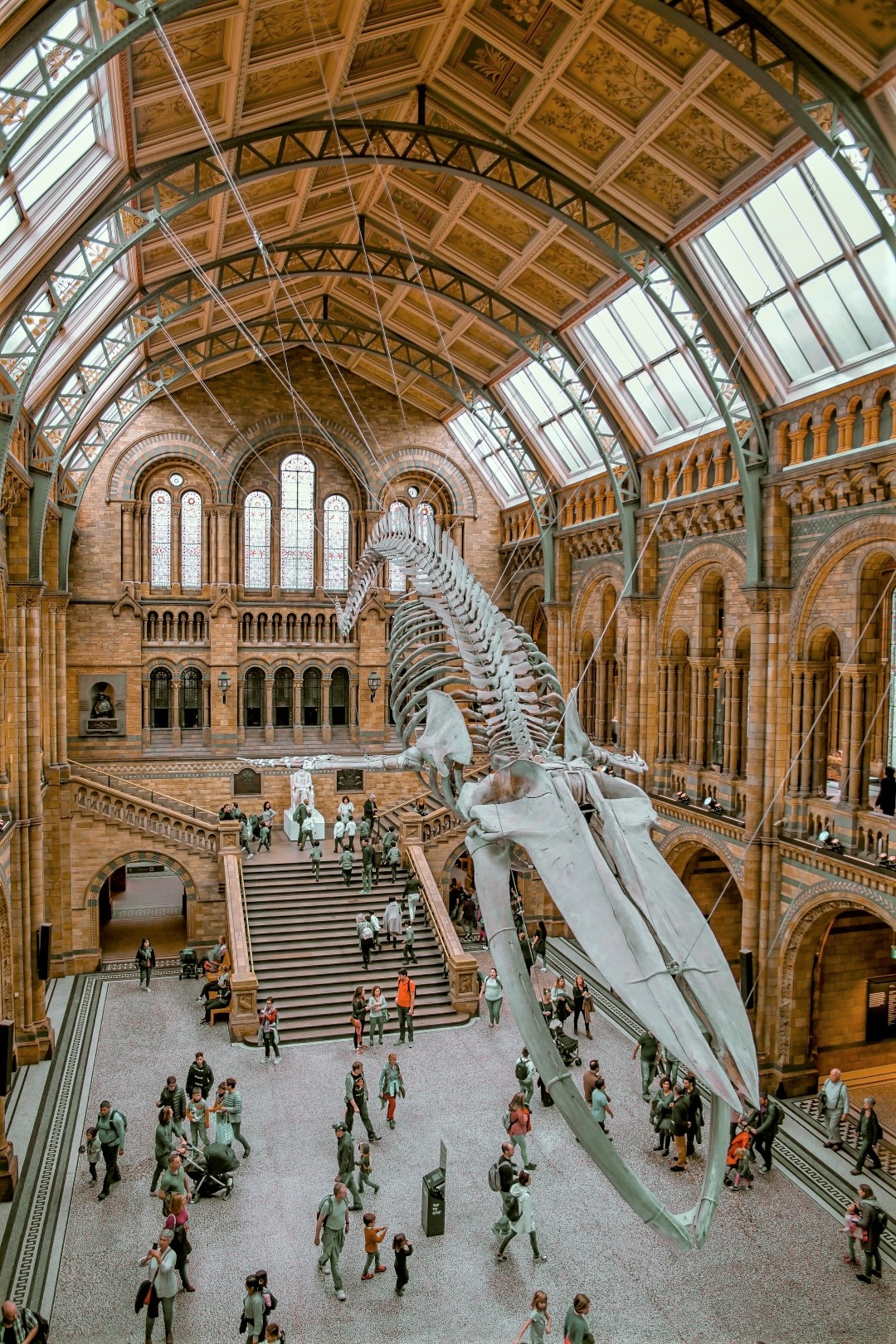
London’s Art Galleries
London has some of the finest art galleries around and art enthusiasts shouldn’t miss the Tate Modern and the National Portrait Gallery. These are my two favourite galleries in London and they never fail to impress.
The Sky Garden
For the best views of the city, head up to the Sky Garden. Located at the top of the walkie talkie, another famous skyscraper in London, the views here are brilliant. You need to reserve tickets a few weeks in advance but tickets are free. Tickets can be booked via the Sky Garden website.
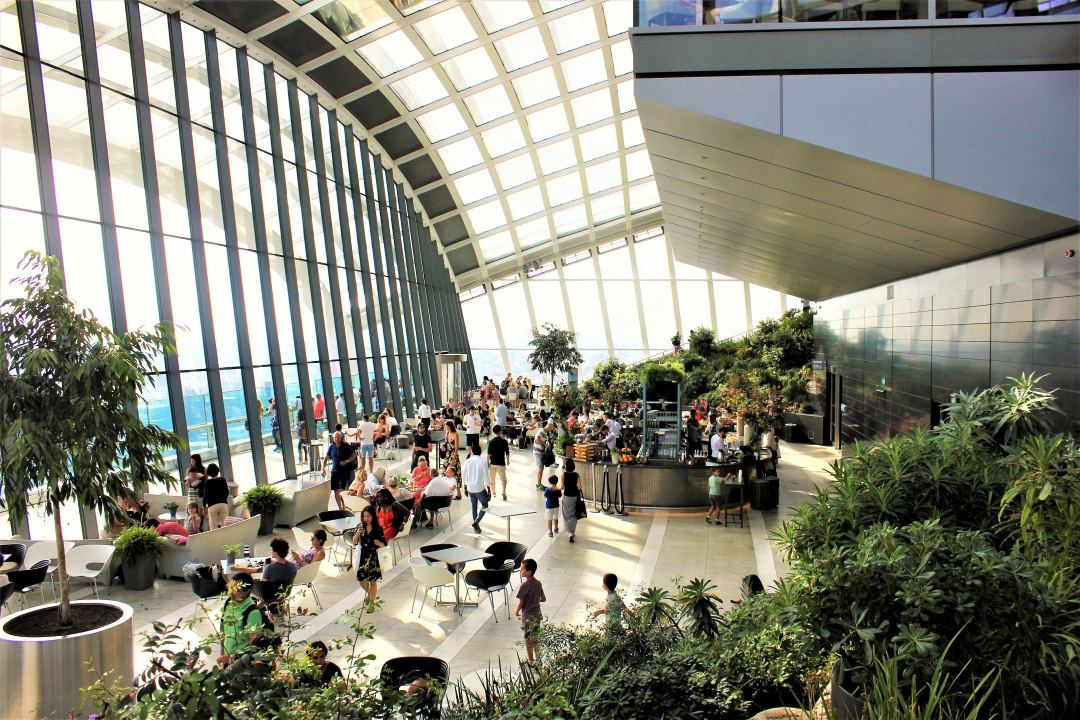
Borough Market
London is jam-packed with great foodie markets, but the winner always has to be Borough Market. Located right underneath London Bridge, it’s the perfect place for a pit-stop for international cuisine and British flavours. Borough Market is one of the oldest and largest food markets in London.
Somerset House
A beautiful place to spend an afternoon, Somerset House puts on some of the best exhibitions and shows in London. During the summer, look up what gigs are on or pull up a picnic blanket to enjoy an outdoor cinema screening in the Neoclassical courtyard. During the winter, skate your way around the ice rink that’s installed in the courtyard.
Shakespeare’s Globe Theatre
A childhood (and adulthood) favourite of mine is Shakespeare’s Globe Theatre, right next door to the Tate Modern. This gorgeous theatre is worth a look because of it’s stunning and unique architecture. If you can, grab hold of standing theatre tickets at the Globe for just £5 in the summer (some of the cheapest theatre in London). You’ll pay closer to £30-£40 for seated tickets. The productions here are fabulous.
London Black History Walking Tour
Take a walking tour with Black History Walks for real insight to how London came to be the mega-city it is today. These tours go to the jugular of the British Empire and black history in England. Even better, your tourist pound contributes directly to supporting black businesses in London.
Camden Lock and Market
Camden is London’s alternative neighbourhood with a more grungy, hippy and goth vibe wrapped into one. The market is a huge cavern of spiralling shops and stalls. Follow the market into The Stables and get lost exploring the trinkets, tattoo parlours and piercing places. Camden Lock is where you’ll find international street food vendors and I recommend grabbing a roti there.
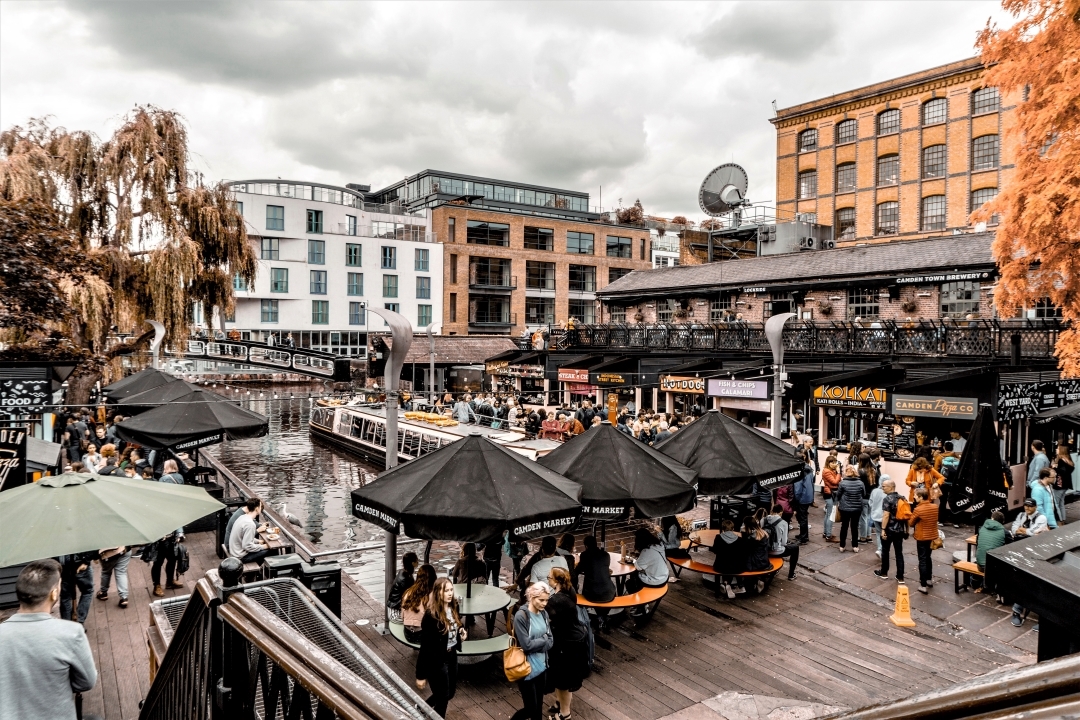
Shoreditch
If you lean more towards the hipster spectrum and love a good, strong coffee then head over to Shoreditch. London’s up-and-coming, self-confessed trendy neighbourhood is a favourite with many of the younger generation in London. It’s home to the annual Coffee Festival and various other events.
Best Places to Eat in London
Best Restaurants in London
Caravan (Kings Cross & Others) — Caravan is one of London’s small and trendy chain restaurants, rising in popularly thanks to its plant-based options. The Granary Square branch at King’s Cross is particularly nice, with a modern, warehouse setting and wooden tables. Great for brunch and evening meals.
Mildred’s Vegetarian Restaurant (Soho) — My favourite vegetarian restaurant in London. Mildred’s serves great veggie cuisine including a lip-smacking sweet potato curry. It’s only a small place and gets busy quickly. You can’t book, so make sure you get there early to secure your spot in the queue.
BAO (Fitzrovia & Others) — There is no restaurant I drool over more than BAO. The Fitzrovia branch has a nice open feel to its upstairs restaurant and it’s perfect for a late afternoon or early evening bao feast. The Riesling is exquisite and nothing in the world beats their peanut-coriander ice cream roll that’s so authentic you’d think you were in Taiwan.
CookDaily (Shoreditch) — Oh Shortditch, you’re so hipster. This vegan bowl joint is housed inside a shipping container with a range of other restaurants and bars (perfect for a group of picky friends with different food tastes). Expect to pay around £7-8 for a big bowl of curry or noodles.
Khaosarn (Clapham) — The best Thai food in London. Khaosarn is a more upscale restaurant without being snobby. In the summer, the open their front and have street-side benches and wooden tables. Order the green Thai curry, for sure.
Afghan Kitchen (Angel) — This low-key, hole-in-the-wall Afghan food joint is the place to go for a quick lunch with excellent flavour. The decor is basic but the food is good. Vegetarian options are plentiful. I’d recommend a plateful of their chickpea curry.
Best Cafes in London
Fernandez & Wells (Somerset House & Others) — This London cafe chain serves up strong coffee, ciabatta sandwiches and fresh salads. There are a few across London, including inside Somerset House.
Monmouth Coffee (London Bridge & Others) — London’s most famous coffee chain attracts clientele from across the world. They source their coffee directly from small farms and roast it independently in their London roaster.
Soho Grind (Soho) — Coffee shop and bar, depending on the time of day. The coffee here is house-blended and you can guarantee you’ll be buzzing after your cortado. Pull up a red diner stool and enjoy.
E5 Bakehouse (Hackney) — My favourite breakfast place in London. Located in an old railway arch, this cafe serves great coffee as well as home-baked granola, sourdough and croissants.
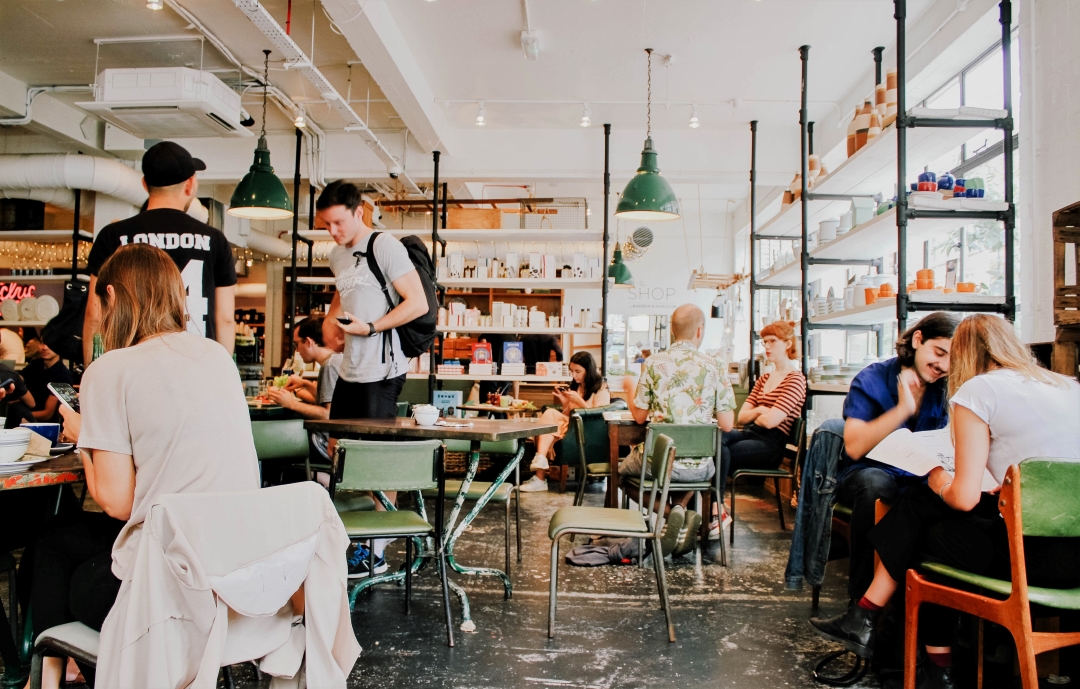
How To Get Around London
The Tube — The best way to get around London is the London Underground (the tube). The Tube has lines connected to Heathrow and Gatwick airports and spans across the city. Tube stations can be deceptively close together and it can sometimes be quicker to walk than jump on the tube. Check this handy Tube map which shows the walking time between stations.
I’d recommend buying an Oyster card only if you plan to be in the city for more than a week. If you’re only taking a few journeys, you’re better to buy single journeys or a day travel card and avoid the non-refundable fee for the Oyster card.
Bus — London’s bus system also works well and Google Maps displays bus routes and times between neighbourhoods in London. You can also use an Oyster card or day travel card on London buses.
Taxis — London’s black cabs circuit the city and can be easily flagged down. They run on a meter but taking a taxi in London is excruciatingly expensive so I wouldn’t recommend it.
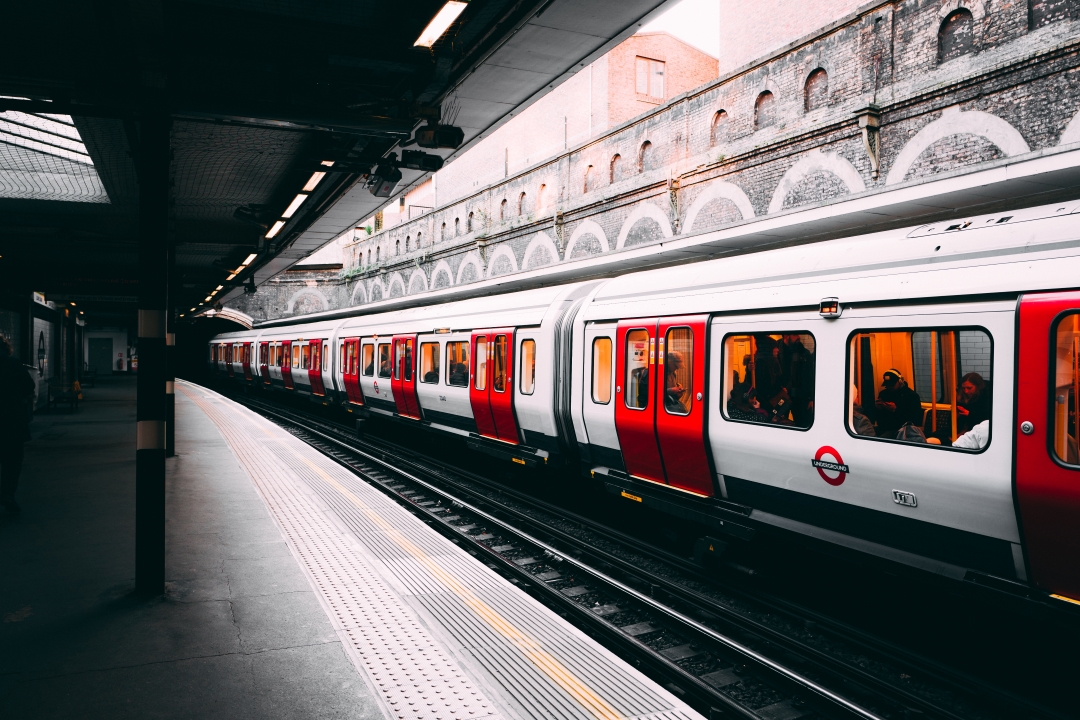
Getting In and Out of London
Heathrow Airport — Heathrow is London’s biggest airport. Non-stop trains run between Heathrow and London Paddington every 15 minutes. The journey takes around 15 minutes. From Paddington, you can take the underground to other London tube stops.
Gatwick Airport — Gatwick is the second largest airport in London, situated to the south. Gatwick Express trains are the fastest way to get into central London. Southern and Thameslink trains have lower fares. Gatwick Express trains run from Gatwick to London Victoria every 15 minutes between 5AM-00:30AM. The train journey takes around 30 minutes.
Other airports outside of but within easy reach of London are London Stanstead and London Luton. Expect to pay slightly more for public transport into Central London from these airports.
Know Before You Go
Climate — The best time to visit London is during the Spring (April-May) and the Summer (June-September). The temperature is usually nice with highs of 21-25°C (though global warming has sometimes meant much higher). The coldest months are December-February with temperatures from 5-9°C and frequent wet weather. It will rain no matter what season, so bring an umbrella!
Currency — The UK uses the British pound. Credit and debit cards are accepted almost everywhere, including on the tube (you can tap your card on the entry barrier to take the tube).
ATMs — There are ATMs on almost all street corners both inside and outside of banks.
This London travel guide was written in collaboration with Hotels.com, but all views are my own honest opinions and all the recommendations here come from my own personal experience living and travelling in London.


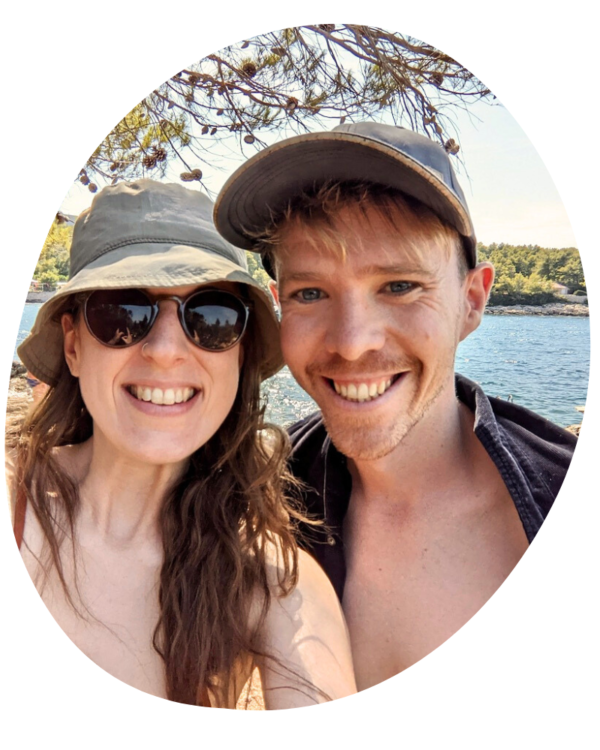


Bill Parsons
Your site is so very helpful. My wife and are 65 and making our first and only trip to London and Paris. Trying to make travel plans now. How many days should we spend in each city to get the flavor of each place? We are retired teachers so we can’t spend a week in each place. Thank you so much!!
Charlie Marchant
Hi Bill – That’s wonderful. I hope that you love London and Paris as much as we do. I would recommend staying 5 nights in each as there is so much to do and see in both.